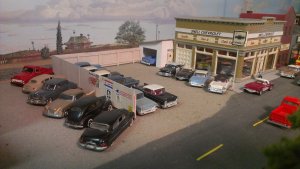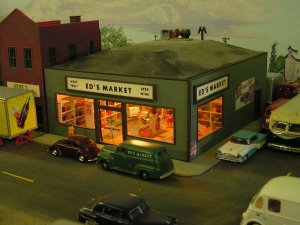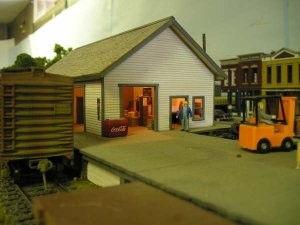Today I began the task of illuminating my HO houses and buildings. I had bought some very nice lamp assemblies for that purpose. I set up a test lamp and I set my buildings and houses over it one at a time and discovered that the light colored structures glowed and the light through the windows wasn't as bright as I thought it would be. Had I known that prior to assembly, I would have painted the insides a dark color.
I tried turning the room lights off and light through the windows was better, but I don't run the trains in the dark. The building glow was much more apparent. I probably will only illuminate a couple of structures. As an afterthought, some of the buildings have a pad on the ceiling that the instructions said could be used to mount a light. That might make a difference, but the buildings will probably still glow. Had I known the results would be this poor, I would have spent the money on something else.
I tried turning the room lights off and light through the windows was better, but I don't run the trains in the dark. The building glow was much more apparent. I probably will only illuminate a couple of structures. As an afterthought, some of the buildings have a pad on the ceiling that the instructions said could be used to mount a light. That might make a difference, but the buildings will probably still glow. Had I known the results would be this poor, I would have spent the money on something else.




